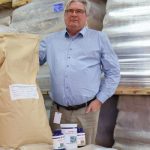
Australian dairy processors are cementing their sustainability credentials with new data showing a 37.8 per cent reduction in absolute greenhouse gas emissions since 2010-11.
Australian Dairy Products Federation has released a publication documenting dairy processors sustainability achievements against the dairy manufacturers’ environmental performance scorecard, along with stories of innovation and success.
“For Australian dairy processors, sustainability is more than a requirement, it’s a commitment to ensuring the Australian dairy industry continues to be one of the best in the world,” ADPF chief executive officer Janine Waller said.
“We know our sustainability credentials are key to achieving our goal of a strong, vibrant Australian dairy industry and to keep dairy manufacturing local.”
For more than 10 years, the industry has operated under the leadership of the Australian Dairy Industry Council’s Australian Dairy Sustainability Framework, with a sustainability promise ‘to provide nutritious food for a healthier world’.
Australian dairy processors are tracking, measuring and reporting on emissions reductions, sustainable packaging, waste reductions, human rights and more.
In 2022-23, dairy processors generated on average 125.5t CO 2 e of greenhouse gas per millilitre of raw milk processed — another year-on-year cut in emission intensity.
This reduction equates to a 10.4 per cent drop in emissions intensity versus the 2015-16 baseline year.
Compared to the original baseline of 2010-11, this represents a significant 29.8 per cent reduction in emission intensity, equating to an overall reduction in absolute emissions of 37.8 per cent.
The publication Australian dairy processors commitment to a sustainable future features case studies contributing to the whole dairy industry meeting its sustainability targets.
In an Australian first for the dairy industry, Australian Consolidated Milk in Girgarre is utilising an anaerobic digestion system to convert whey permeate, a by-product of the cheese-making process, into biogas — a clean and sustainable energy that will eventually power their whole plant.
“In an era where environmental responsibility is paramount, this innovative upgrade at our Girgarre facility represents a significant step forward in ACM’s commitment to sustainability,” ACM chief executive officer Jason Limbrick said.
“We are not only reducing our carbon footprint but also setting a new standard in the dairy industry. This system will allow us to generate 80 per cent of our electricity and 50 per cent of our natural gas needs on-site, significantly reducing emissions.
“It’s a tangible demonstration of how progressive technology can deliver meaningful environmental benefits while supporting our ongoing production and contributing positively to the local community.”
The Bega Group has developed the Bega Circular Valley 2030 program, which is a transformative regional development initiative with a vision to establish the Bega Valley as the most circular regional economy by 2030.
“The Bega Circular Valley 2030 program is more than just a vision, it’s a bold step towards redefining how regional economies can thrive sustainably,” Bega Group executive chairman Barry Irvin said.
“By embracing the principles of a circular economy — eliminating waste, circulating products and regenerating natural and social systems — we’re not only protecting our environment but also strengthening the resilience of our community.
“Through innovative projects like the National Circularity Centre and our decarbonisation partnership with local farmers, we are laying the groundwork for a future where economic growth and environmental stewardship go hand in hand.”
Ms Waller said Australian dairy processors were improving operating efficiencies, transitioning to renewable energy, turning waste into energy (bioenergy), decarbonising fleets and optimising transport activity.
“Our processors are committed towards achieving a whole of industry target of 30 per cent reduction in GHG emission intensity by 2030 (from a 2015-16 baseline) and they are making great inroads,” Ms Waller said.
She said, to provide some perspective, the annual reduction in GHG emissions processors had achieved since 2010-11 levels was equivalent to removing almost 135,000 cars from the roads each year. To offset this amount of CO 2 emissions, about 28 million trees would need to grow for one year.
“We look forward to sharing further progress against the Australian Dairy Industry Sustainability Framework as we continue to build our credentials as a recognised leader and product of choice in sustainability and climate action,” she said.
Read the ADPF publication at adpf.org.au
You can now read the most important #news on #eDairyNews #Whatsapp channels!!!
🇺🇸 eDairy News INGLÊS: https://whatsapp.com/channel/0029VaKsjzGDTkJyIN6hcP1K

























